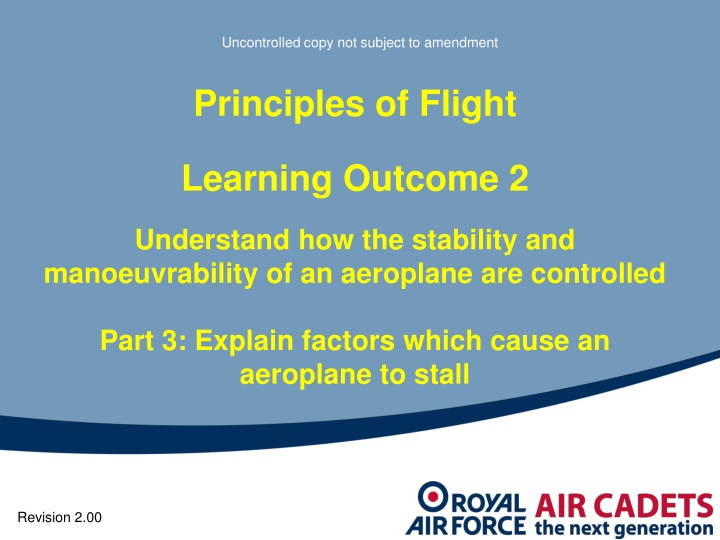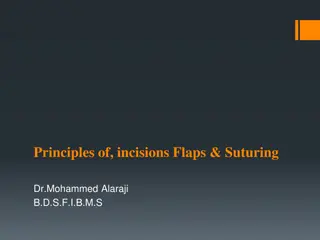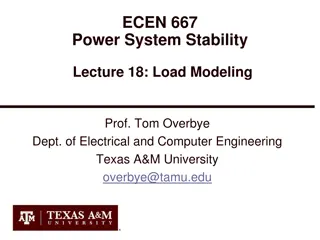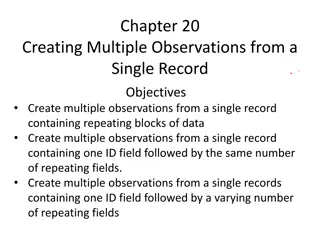Aeroplane Stalling Factors: Trailing Edge Flaps and Leading Edge Devices
Explore the factors contributing to aeroplane stalling, including the impact of trailing edge flaps and leading edge devices. Discover how stalling speed is affected and gain insight into the mechanisms behind aeroplane stalls.
Download Presentation

Please find below an Image/Link to download the presentation.
The content on the website is provided AS IS for your information and personal use only. It may not be sold, licensed, or shared on other websites without obtaining consent from the author.If you encounter any issues during the download, it is possible that the publisher has removed the file from their server.
You are allowed to download the files provided on this website for personal or commercial use, subject to the condition that they are used lawfully. All files are the property of their respective owners.
The content on the website is provided AS IS for your information and personal use only. It may not be sold, licensed, or shared on other websites without obtaining consent from the author.
E N D
Presentation Transcript
Uncontrolled copy not subject to amendment Principles of Flight Learning Outcome 2 Understand how the stability and manoeuvrability of an aeroplane are controlled Part 3: Explain factors which cause an aeroplane to stall Revision 2.00
Principles of Flight Revision
1. What effect does a trailing edge flap have on the stalling speed? a. Higher b. Lower c. The same d. No difference
2. One type of leading edge flap is .. a. Plain b. Slot c. Split d. Krueger
3. What are some of the high lift devices on the leading edge called? a. Plain flaps b. Ailerons c. Slats d. Split flaps
Stalling Objectives: 1. Describe the stall in terms of lift 2. State the generally used critical or stall angle of attack 3 Understand the relationship between stalling and airspeed 4. State where the pilot obtains information regarding the aircraft s stalling speed 5. List the factors which affect the stalling speed
1. It is essential that a pilot understands stalling 2. During take-off and landing, the aircraft is at low speed 3. In aerobatics the aircraft experiences high G What has stalling got to do with these?
Stalling speed Stalling speed is when: The speed at which a clean aircraft (flaps up) 2. At a stated weight 3. With the throttle closed 4. Flying straight and level 5. Can no longer maintain height
Boundary layer separation low AoA Towards higher pressure plus viscous adhesion - slower Towards lower pressure - faster Transition point (perhaps) from laminar to turbulent boundary layer
Towards higher pressure Plus viscous adhesion - much slower Towards lower pressure - faster Separation point
Towards lower pressure - faster Separation complete
Factors affecting stalling speed 1. Aircraft weight
Danger Danger If you pull g , the stalling speed increases, e.g. if you pull 4g the stalling speed doubles! Danger Danger
The effect of thrust on stalling Lift Thrust Flight path Weight
Lift Lift TR Thrust Flight path Weight
Flight path 1. Aircraft in level flight have a high nose attitude at the stall, particularly swept wing aircraft 2. If the engine is at high power there are two thrust components: a. Along the flight path (countering drag) b. Vertical (opposing weight) Therefore less lift is required from the wings, so: SLOWER STALLING SPEED (V) AT CLMAX
Natural stall warning Speed Nose attitude Controls Light buffet Heavy buffet Nose drop Wing drop Descent
Turbulent air missing tailplane Normal flight
Turbulent air missing tailplane tailplane Turbulent air Just touching Stall warning Normal flight Light buffet
Turbulent air just touching tailplane tailplane Turbulent air covering Stall warning Stall Heavy buffet Light buffet Aircraft descending
Typical stall warning vane Vane held down by airflow Vane lifted up by airflow Micro-switch not made Micro-switch made No stall warning given Stall warning given
The effect of the flap Basic clean situation Relative airflow
Flap lowered Basic clean situation Relative airflow Effective increase in AoA
Flap Lowered Maintaining the same lift To obtain the same CL the attitude is Effective Increase in AoA lowered to reduce the AoA
Standard stall recovery 1. Move stick centrally forward until buffet stops 2. Open throttle at the same time 3. Only then level the wings 4. Raise nose at a safe speed and climb
Other factors affecting stalling 1. Ice: Alters the shape of the wing, this will reduce lift 2. Damage: Can also reduce lift, for example after a bird strike
Summary of stalling speeds What happens to the stalling speed ..... 1. If aircraft weight increases? The stalling speed will increase 2. If we lower the flap? The stalling speed will decrease 3. If we are pulling G ? The stalling speed will increase 4. If the aircraft is damaged or has had a birdstrike? The stalling speed will probably increase 5. If using engine thrust? The stalling speed will decrease
Remember: 1. An aircraft can stall in any attitude level, turning, upside-down etc. 2. Where would we find our stalling speeds? Pilot s Notes or Aircrew Manual
1. What happens to lift when a wing is stalled? a. Lift increases as the angle of attack decreases b. Lift decreases as the angle of attack increases c. Lift is greatly reduced d. Lift remains unchanged
2. The critical angle of attack is generally about: a. 5o b. 15o c. 25o d. 35o
3. Which of the following will not reduce the stalling speed? a. Extra weight b. Larger wing area c. Flaps lowered d. Flaps raised
4. Where would you find the information regarding the aircraft s various stalling speeds? a. Pilot s Notes b. Air Traffic Control c. Ground crew d. McDonald s























